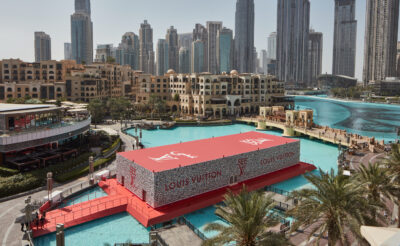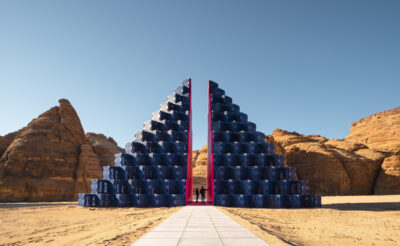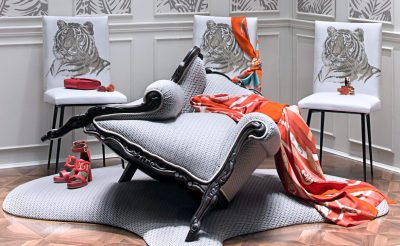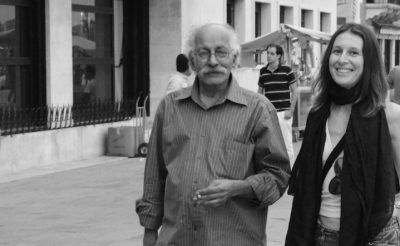Driven by her deep yearning for self discovery and a strong curiosity about her origins, multi-disciplinary artist Sarah Alabdali makes her place in Saudi Arabia’s cultural zeitgeist. Ahead of her exhibition at the Abu Dhabi Art fair, she tells MOJEH about her artistic journey that regularly challenges convention
Having spent her formative years in Jeddah, a city packed with multifaceted ideologies that have permeated society since the 1980s, Sarah Alabdali found solace in the language of art. Her first artwork used the streets of Mecca as a canvas for expression — a satirical piece that depicted the rapid urbanisation of Mecca’s skyline, manifested through street art. This not only established her as one of Saudi Arabia’s first street artists but also one who wasn’t afraid to break the mould by using a medium that could be perceived as taboo — graffiti.
“Art became a natural means for me to navigate the complexities and contradictions that I encountered during my upbringing in Jeddah,” she says. “I have practiced this form [graffiti] in my early 20s, when public places made accessible for artists were quite few, very few galleries to say the least. I see a community of graffiti artists today with amazing skills and aesthetics who are getting big projects and commissions and it makes me happy this form of art is getting recognition and support.” She continued her master’s degree at the Prince’s Foundation School of Traditional Arts in London, where she further developed her craft. Consequently, she consulted and taught traditional arts and crafts with Turquoise Mountain Trust and the Commission of Tourism and Antiquities in Saudi Arabia. “Ever since, my work has become a combination of visual representations of ideas and ideals adding to research which I sometimes practice solely, and other times include in my art. Traditional schools of painting such as Mughal, Persian and Indian can be traced in my paintings,” she adds.
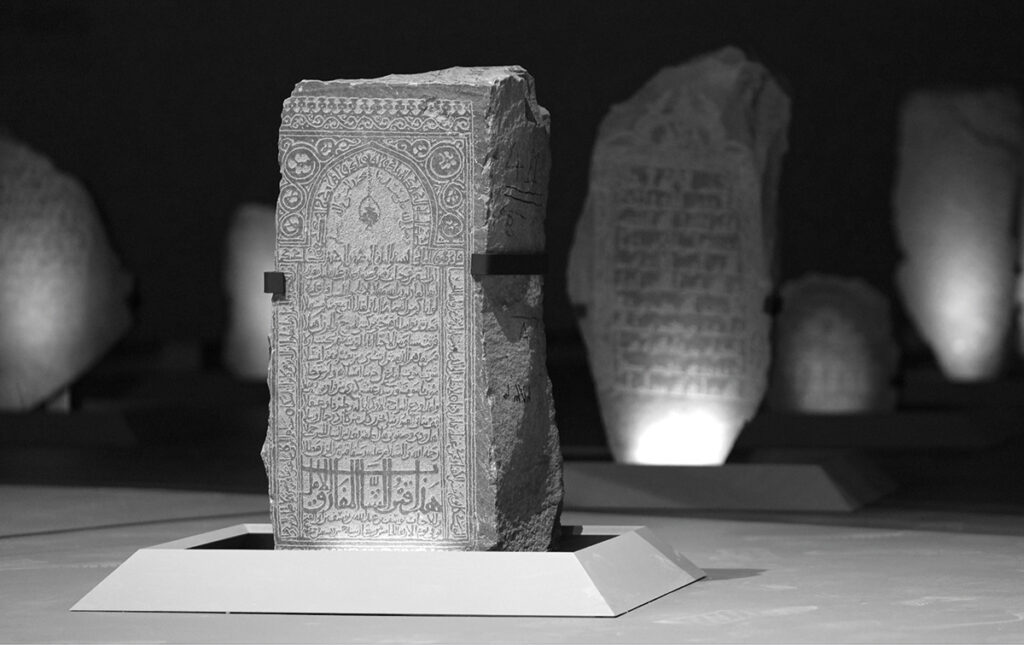
Art installation titled Tombstones showcased at the Islamic Arts Biennale in Jeddah
Her Saudi heritage informs her work in many ways and exploring historical narratives is an integral aspect of her art. She recently showcased her installation at the Islamic Arts Biennale in Jeddah, which served as a profound connection to her ancestral heritage — a curated collection of tombstones from Makkah. Through meticulous study, she uncovered details about lineage, significant life events and the political context in which they existed.
“During this exploration, I focused on the tombstones of two individuals from my direct lineage. This deep dive into their stories brought me closer to grappling with questions of identity. The experience provoked a heightened sense of introspection, as I contemplated the intricate threads that connect me to my ancestors and how their lives continue to shape my own understanding of self,” she says, hailing this commission as her most memorable experience as an artist.
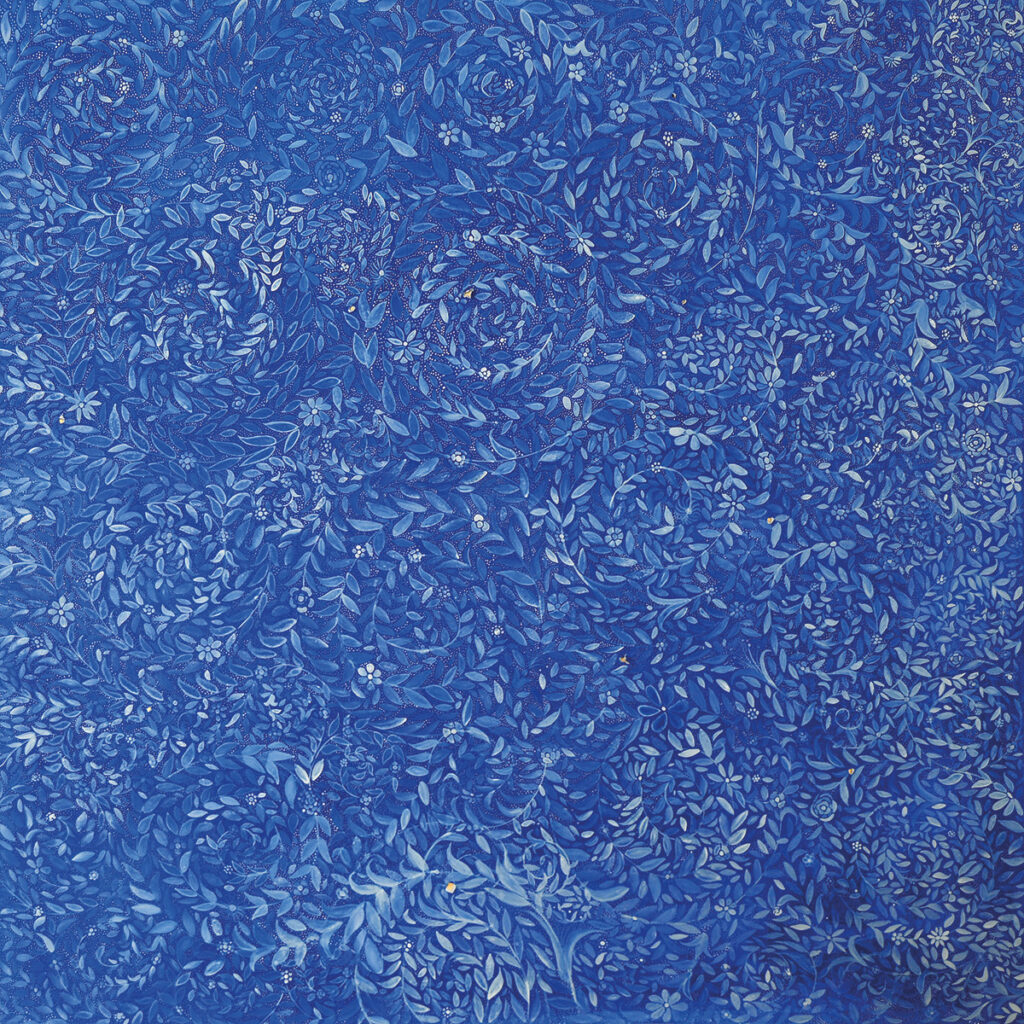
Sarah Alabdali’s collaborative artwork Forest, displaying at the Abu Dhabi Art Fair 2023
She will also be displaying her painting Forest at the Abu Dhabi Art Fair, taking place from 22-26 November 2023. “Measuring 1m x1m, this artwork is a testament to the harmonious fusion of miniature techniques and contemporary artistic expression. What sets it apart is not only its scale but also the meticulous craftsmanship that went into its creation, taking over two months to complete,” she says.
A significant aspect of this painting is the collective effort behind it. As part of her commitment to fostering a community of female painters, she initiated a training programme to teach the intricacies of fine painting techniques to women and Forest represents the first collaborative result of this endeavour. Drawing inspiration from traditional painting ateliers, where artists worked within a collective, this piece embodies collaborative spirit rather than individualistic process. “It is my first painting on this scale. The paper is painted with layers of handmade ultramarine pigment, then carefully filled with freestyle spirals which are completed to fill the whole paper, creating what feels like an intricate forest. When the painting completes, I puncture bits of the paper and attach a layer of gold behind each tear,” she says.
From street art to installations to paintings, Sarah effortlessly navigates various mediums in her effort to convey her message. “Whenever I’m too comfortable creating work, I feel the urge to disrupt the comfort and try something new. This element is essential in my work, and many artists do share the same feeling, the urge to keep learning, experimenting, and indulging in new worlds of expression, she says. “Graffiti was a pretty accidental medium. My motive back then was driven from its high accessibility, and that it reaches out to everyone in the street. My main medium would be painting as I mainly like to describe myself as a painter, but I like to experiment with many mediums and art forms. And I also have a very keen interest in bridging research with my art practice,” she adds.
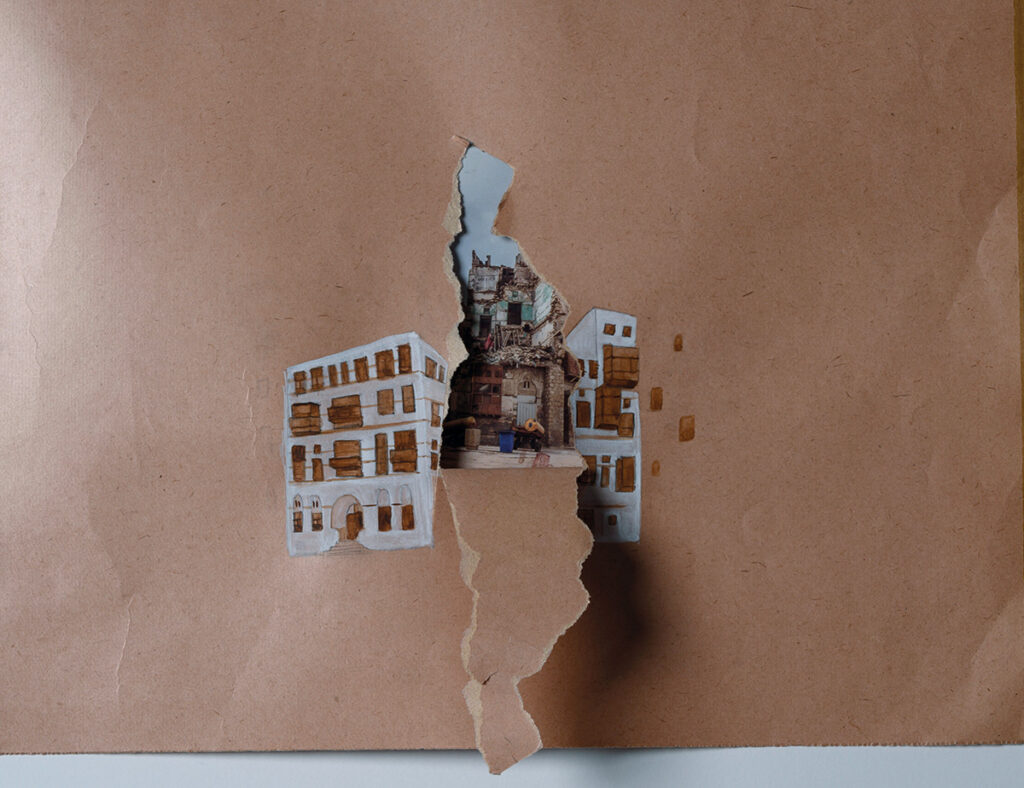
Remains by Sarah Alabdali
Her artistic journey revolves around exploring the complexities of identity, grappling with paradoxes, and offering reflections on the contemporary world through the lens of traditional Islamic and Arab culture. She is particularly drawn to the region of Hijaz and its rich material culture, which she believes has been largely overlooked in terms of academic research and attention. As a female Saudi artist, Sarah is an example of how the country’s commitment to the arts is encouraging local artists to explore and grow.
“I have been supported for being a female artist, I don’t believe I have faced any of the obstacles because of my gender,” she says. “There has been fundamental change since the day I started graffiti up until now. Now, there is a place for professional artists in the scene, whereas in the past it was difficult to introduce yourself into society as an artist, where art was considered a hobby, and often comes as a sign of privilege. Artists now have access to galleries, public spaces and opportunities, and many governmental institutions which have been putting great weight into shifting the cultural and art scene in the kingdom and the Arab and Islamic world.”
Art in Saudi Arabia appears to be emerging as a powerful force for pushing boundaries and is rapidly establishing itself as a prominent frontrunner in the regional and even international art scene. In this climate, artists such as Sarah Alabdali are looking for different ways to create. “I’m excited about exhibiting my latest piece at Abu Dhabi Art with Hafez gallery, among many other projects I’m working on in the studio which will be shared in their due time. I’m also launching a commercial line of fine art prints and home products quite soon.”
Not one to conform to a singular medium or even a particular art form, Sarah Alabdali believes in the transformative power of art. “It speaks volumes, specifically when there’s so much to tell. It challenges people and their perceptions about certain ideals and has the power to smoothly break taboos and discuss them out loud,” she says. Sarah Alabdali will be exhibiting at the Abu Dhabi Art Fair from 22-26 November 2023. Book your ticket here
Read Next: This Travelling Chanel Exhibition Showcases Archival Pieces Designed By Coco Chanel
